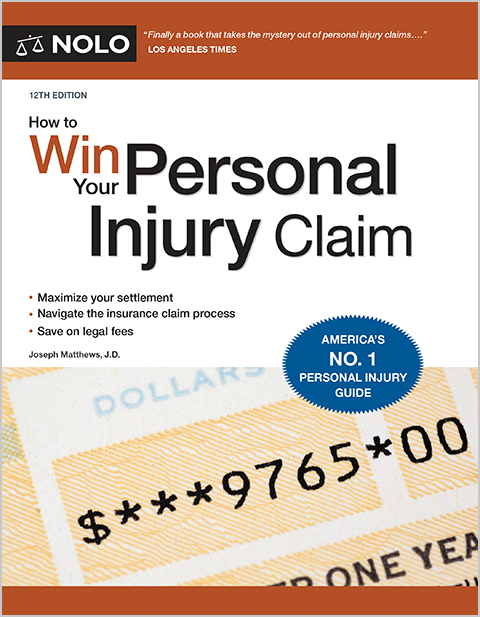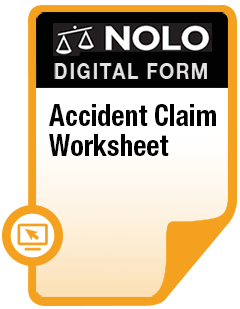Learn when Connecticut owners are liable for injuries caused by their pets, the state's rules for dog-bite lawsuits, and more.
Connecticut law imposes significant responsibilities on dog owners, making them strictly liable for injuries caused by their pets. In some situations, the state also allows victims to recover damages from people other than the animal's owner. In addition, the state has rules covering what kinds of defenses owners can offer if they're sued, and places limits on how long a victim can wait before filing a lawsuit. Both owners and dog-attack victims should understand how these rules apply to them.
Strict Liability for Connecticut Dog Owners
Connecticut's dog-injury statute makes owners strictly liable for damage caused by their pets. While statutes like this are often called "dog-bite" laws, Connecticut's strict liability rule applies to bites, other injuries, and property damage inflicted by a dog.
"Strict liability" means that the owner is automatically responsible for their dog's behavior. Victims don't have to prove that the owner was irresponsible, or that the owner knew their dog was dangerous, to be entitled to damages in a personal injury lawsuit.
But there are two exceptions to this strict liability rule--it does not apply if:
- the injured person was trespassing (or committing another tort), or
- the injured person was "teasing, tormenting, or abusing" the dog.
(Conn. Gen. Stat. § 22-357 (2025).)
Liability for Non-Owners
Sometimes someone other than a dog's owner can be held legally responsible for a bite or other injury. This liability can arise either from Connecticut's dog-injury statute, or from the state's common law.
A Dog's Keeper Can Be Held Strictly Liable
The strict liability rule we discussed above applies not only to owners, but also to a dog's keeper. Under Connecticut law, someone can be treated as a dog's "keeper" if they have control of the animal and have assumed responsibilities that normally fall on the owner.
Evidence that someone is a dog's keeper could include, for example, that they are giving it food and water, walking it, or letting it stay on their property. In general, Connecticut courts will not find a person liable as a keeper unless there's clear evidence that they, and not the animal's owner, had control over it. For example, just coming by to feed a dog while the owner is out of town probably wouldn't make you the animal's keeper. But living in the owner's house as a dog-sitter, or taking the animal into your own home, probably would.
Note that, in some situations, both an owner and a keeper might be liable for harm caused by the animal.
Houghtaling v. Benevides, 217 Conn. App. 754 (2023)
Liability Under Connecticut's "One-Bite" Rule
A victim may also have a case against a non-owner and non-keeper under Connecticut's "one-bite" rule. Many states have their own versions of this rule, but the common element is that it bases liability on whether a person knew (or should have known) that the animal was dangerous. Under Connecticut law, non-owners (and non-keepers) can be liable if they are legally responsible for the safety of people who come onto property they own or control. In addition, these non-owners can only be liable if:
- they knew the dog had dangerous tendencies (for example, because they knew it had bitten or tried to bite someone in the past), and
- they failed to take reasonable precautions to protect people from the animal (for example, by not allowing it on the premises or requiring the owner to keep it leashed or muzzled).
In Connecticut, this rule comes into play when deciding, for example:
- if a landlord can be held responsible when a tenant's dog bites someone in a common area of the building, or
- if a business owner can be held responsible when a customer's dog injures someone on the premises.
Giacalone v. Hous. Auth. of Wallingford 306 Conn. 399 (Conn. 2012)
Defenses to a Dog-Bite Claim in Connecticut
Depending on the facts of the case, a Connecticut owner could have several defenses against liability in a dog-injury case.
As we discussed above, two of these defenses are explicitly listed in the state's dog-injury statute. An owner cannot be held responsible if their pet hurts someone who was provoking the dog, or who was trespassing (or committing another tort).
However, these defenses work differently when the victim is a young child. Connecticut law presumes that a child under the age of seven has not caused their own injuries by trespassing or by provoking the dog. A dog owner can still argue that they should not be held responsible because the child trespassed or provoked the dog, but they will have a much more difficult time succeeding with that defense.
When someone other than the owner is sued under Connecticut's one-bite rule, they can raise defenses including:
- They did not know the dog was dangerous.
- They took appropriate steps to protect people from the dog, and it only hurt someone because of bad luck or because of the owner's bad behavior.
- The incident took place in a location that was not their responsibility--for example, inside a tenant's rented house or on a public sidewalk in front of a business.
Time Limits on Filing a Dog-Injury Lawsuit
Connecticut, like other states, has laws called statutes of limitations that set deadlines for filing civil lawsuits. Different kinds of cases have different time limits. Lawsuits over damage caused by dogs are categorized as personal injury cases, and Connecticut's statute of limitations for personal injury cases gives victims two years to file a lawsuit. It's vital to file a lawsuit before time runs out; otherwise your case will be thrown out even if you have a strong argument that the defendant is liable.
Keep in mind that the two-year deadline will usually--but not always--start to run on the date of the injury. These rules can be complicated, so if you have questions about filing a lawsuit over a dog attack you may should consider speaking with an attorney before too much time passes.
Criminal Penalties and Rules for Dangerous Dogs in Connecticut
If a dog bites or attacks someone, local animal control officials have the authority to seize the animal and order its owner to take steps to protect people from their pet. If an owner disagrees with a decision by animal control, they have two opportunities to get the decision changed or revoked:
- Owners have the right to appeal an order from animal control in the local Superior Court.
- Connecticut law requires a so-called "pre-appeal" meeting. This is a less formal opportunity for the animal's owner (and their attorney, if they have one) to meet with representatives from animal control. If the two sides can agree on how to change the order, then a new order will be issued without the need for a court hearing.
An owner must comply with any order that applies to their pet, or risk being charged with a misdemeanor.
Connecticut also has a law that makes it an infraction to keep a dog that creates a nuisance because of its vicious disposition, by barking excessively, or by creating another disturbance. Owners can be ordered to take steps to prevent the dog from continuing to be a nuisance, and can be charged with a misdemeanor for future violations. In addition, the owner risks having the dog seized by animal control.
Finally, owners are responsible for making sure their dogs are under control when they aren't on the owner's property. The dog can be under the control of the owner, or someone like a dog walker, friend or family member. But if a dog roams freely onto someone else's property, or into a public area, then the owner is guilty of an infraction.
Particularly irresponsible owners face more serious consequences for allowing their dogs to roam off of their property. An owner can be fined up to $1,000 and jailed for up to six months if:
- they know their dog is vicious
- they have allowed the animal to roam off their property at least once in the past year
- they "intentionally or recklessly" allow it to roam off the property again, and
- the dog injures someone without provocation.
(Conn. Gen. Stat. §§ 22-358(c) and 22-358(h)(4) (2025); Conn. Gen. Stat. § 22-363 (2025); Conn. Gen. Stat. § 22-364 (2025) )
Next Steps in Your Connecticut Dog-Bite Case
Whether you've been hurt by a dog in Connecticut, or your pet has been accused of harming someone, it's important to understand your rights and responsibilities under state law. A lawyer with experience handling dog-injury cases discuss your situation with you and help you decide the best way forward.


